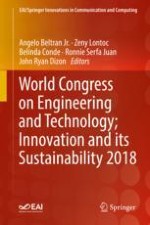The book presents the proceedings of the World Congress on Engineering and Technology, Innovation and its Sustainability (WCETIS 2018), which took place on November 28-29, 2018 in Manila, Philippines. The conference featured the following tracks: Industrial Engineering and Healthcare, Sustainable Infrastructure; Water Resources Planning and Management; Heat transfer and fluids; Electronics and Electrical Engineering; and Internet of Things. Papers stem from academia and industry throughout the world, showing a variety of perspectives.
Presents the proceedings of the World Congress on Engineering and Technology, Innovation and its Sustainability (WCETIS 2018), November 28-29, 2018 in Manila, PhilippinesShows how engineering and technology serve to support a variety for industries from manufacturing to water resourcesFeatures papers from a variety of researchers and developers from around the world
